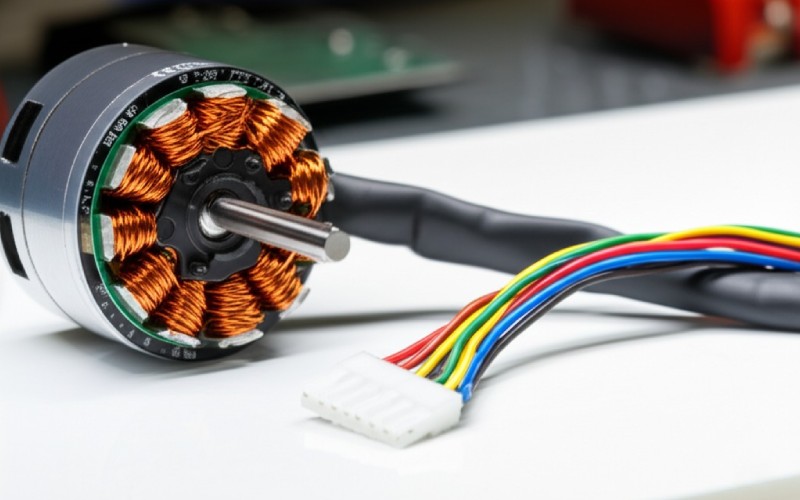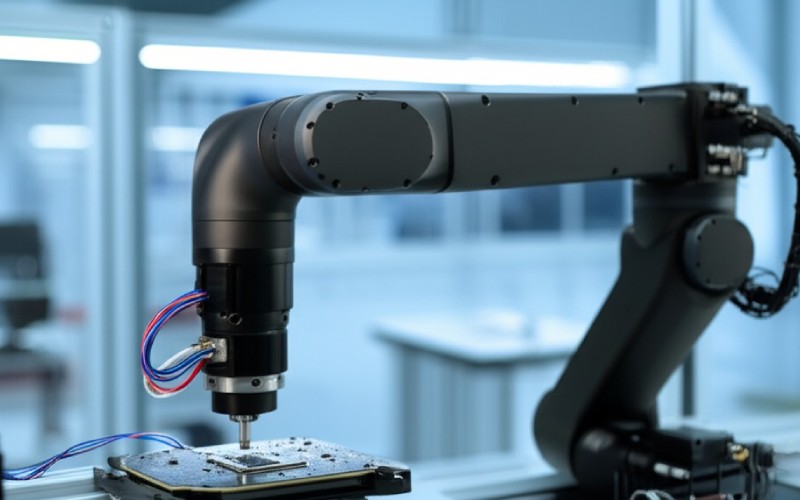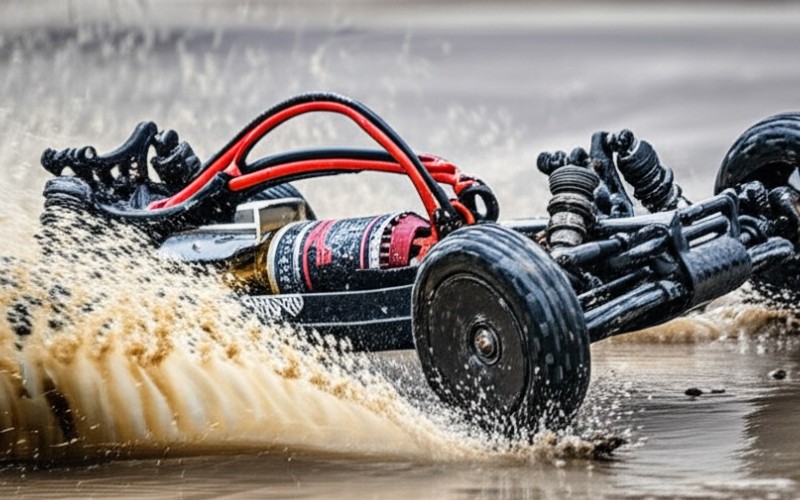Let Sino's Lamination Stacks Empower Your Project!
To speed up your project, you can label Lamination Stacks with details such as tolerance, material, surface finish, whether or not oxidized insulation is required, quantity, and more.

In this article, we will look at the big differences between sensored and sensorless motors. You will learn the strengths and weaknesses of each. By the end, you will know how to pick the right motor for your project, saving you time and headaches.
A sensored motor is a type of brushless electric motor that has special sensors inside. These are usually Hall effect sensors. The job of these sensors is to watch the rotor, which is the part of the motor that spins. They know the exact rotor position at all times, even when the motor is not moving at all. This is a huge advantage for certain tasks.
This information, or feedback, is sent from the motor to the motor controller, which is often called an ESC (Electronic Speed Controller). The sensor information travels through a separate sensor cable. Because the ESC knows exactly where the rotor is, it can apply voltage to the motor windings in the perfect sequence. This results in very smooth motor operation, especially at low speed. A sensored motor provides excellent control at low speeds.
As you might guess, a sensorless motor is a brushless motor that does not have any position sensors inside. This makes the motor itself simpler. It has fewer wires and fewer parts that can break. So, how does the controller know when to fire the windings if there is no sensor to tell it where the rotor is? It uses a very clever trick.
A sensorless motor ESC works by listening for a tiny electric signal from the motor itself. This signal is called “back EMF” (Back Electromotive Force). The motor generates this small voltage naturally when it spins. The ESC uses the timing of this back EMF signal to figure out the rotor position and speed. This method works great, but there’s one catch: the motor must already be turning to create the signal. This can cause problems at very low-speed or from a complete stop.

The biggest difference is how they start moving. A sensored motor knows where the rotor is from the start. This allows it to have smooth operation from zero speed. There is no guessing. This is critical for applications requiring precise control from a standstill. The sensor feedback makes the whole control system more accurate.
A sensorless motor, on the other hand, has to guess to get started. The ESC sends some pulses of power to the motor to “kick” it into motion. Once it starts spinning, the ESC can use the back EMF for detection of the rotor position. This starting “kick” can cause a small stutter or jerk. This is not a problem for a fan or an RC airplane propeller, but it is a problem for a robotics arm that needs precision. The differences between sensored systems are clear at low-speed control.
You should choose a sensored motor whenever you need smooth performance at low speed. Think about tasks that need a gentle touch. If your machine needs to start moving slowly without any jerking, a sensored motor is the best choice. These motors are perfect for applications requiring precise control.
Good examples of a sensored motor application include rock crawlers in the RC hobby world, which need fine throttle control to climb over obstacles. They are also essential in robotics and industrial automation. Imagine a conveyor belt that needs to start and stop very gently, or a camera gimbal that needs to move without any shaking. In these cases, the performance and efficiency you get from a sensored DC motor is worth the extra complexity. A sensored motor is equipped with sensors for a reason.
A sensorless motor is the right choice when your main concerns are simplicity, cost, and reliability. Since there is no sensor or extra sensor wire, there are fewer things to fail. This makes a sensorless brushless motor very tough. They are great for applications where the motor will be in a harsh environment.
You should choose a sensorless motor when your application runs at high speed and does not need delicate control at low speeds. Think about things like RC cars built for racing, drones, fans, and pumps. These devices quickly get up to a high speed, where the sensorless algorithm works perfectly. For these uses, the small stutter at the start does not matter at all. The main advantage of sensorless brushless motors is their simple and robust design.
Yes, the motor controller, or ESC, matters a lot! You cannot just use any ESC with any motor. A sensored motor needs a sensored ESC. This type of ESC will have an extra sensor port on it. This is where you plug in the sensor cable from the motor. This sensor port is how the ESC gets the important rotor position feedback.
A sensorless motor needs a sensorless ESC. These ESCs are programmed with the algorithm needed to read the back EMF signal. Many modern ESCs are actually sensored and sensorless capable. They have a sensor port, but if you don’t plug a sensor cable into it, they will automatically run in sensorless mode. This gives you flexibility, but you must have the right ESC for the motor you choose to get the best performance and efficiency.
This is a common question. Yes, you can often use a sensored motor with a sensorless ESC. When you do this, you just don’t plug the sensor cable in. The sensored motor will act just like a sensorless motor. The ESC will use back EMF to control the motor, and you will likely see that stutter at low speed. You lose the main advantage of the sensored motor.
However, you cannot go the other way. You cannot use a sensorless motor with an ESC that is in sensored-only mode. The ESC will look for a sensor signal that isn’t there. The motor will not spin at all. This is why it is best to match your motor and ESC type. Using a sensored and sensorless motor ESC gives you the most options.

The environment where your motor will operate is very important. Sensored motors have more parts and connections. The sensor itself and the sensor cable are extra points of failure. In wet, muddy, or very dusty conditions, these parts can be damaged. Water can get into the sensor or the connection at the sensor port, causing the motor to fail.
A sensorless motor is a better choice for a harsh environment. Because it has no external sensors or delicate sensor wires, it is a sealed and more robust system. There are fewer places for water and dirt to get in and cause problems. If you are building a vehicle or machine that will be exposed to the elements, the better reliability of a sensorless DC motor might be the deciding factor. The lack of sensitive electronics is a big advantage.
Generally, yes. Sensored systems are usually more expensive and have higher complexity. The sensored motor itself costs more to make because it has the Hall effect sensors inside. The sensored ESC is also a bit more complex. You also have the added part of the sensor cable. This extra complexity means there is more to set up and more that could potentially go wrong.
Sensorless systems are simpler and often cheaper. The sensorless motor is less expensive to produce. The ESC can also be simpler in design. This lower cost and simplicity make sensorless systems very popular for many hobby and consumer applications. If your budget is tight or you want to simplify your design, a sensorless setup is a great option.
Selecting the right motor comes down to your specific requirements. You need to ask yourself one main question: How important is smooth performance at very low speeds? Answering this will guide you to the right motor choice between a sensored or sensorless system.
If your application involves tasks like rock crawling, robotics, or anything needing fine low-speed control and torque, you need a sensored motor. The precision you get is essential for these jobs. If your application is all about high speed and toughness, like a race car, a drone, or a fan, a sensorless motor is more suitable. It is simpler, more robust, and more affordable. Carefully think about your project’s needs to make the optimal choice between a sensored and a sensorless brushless motor.